OUR BURNING PLANET SOLUTIONS
Choosing to make a difference: A household’s journey to zero waste
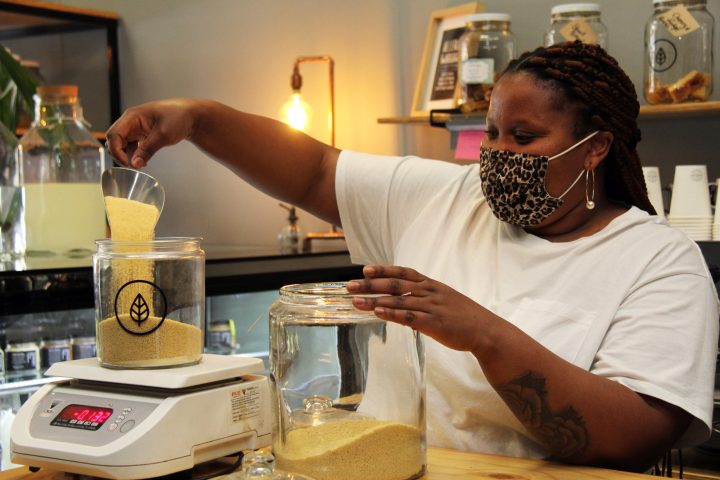
This is the first in an occasional series by Daily Maverick readers about their personal efforts to fight the climate crisis and biodiversity loss. In this inaugural instalment, Colleen Dardagan describes her ongoing journey to become a zero-waste household.
“Only God and earthworms know how to make soil but now God has forgotten, and the earthworms are not telling.” — Mavis Arnold, my mother, who religiously planted her vegetables by the lunar calendar and brewed orange wine which she insisted was non-alcoholic. In truth it kicked like a mule.
***
When the manager of our residential complex disparagingly described my garden as “akin to the side of a road”, I thanked him for the compliment.
He hasn’t been back to our home since.
Choosing to live in closer harmony with the environment while cutting back on waste in our home started many years ago. I am passionate about it, anxious and deeply concerned about the future of our planet and I want to make a real difference.
But it costs friends and family members, while others will happily hand out labels such as “she’s eccentric”, “odd”, or the best one by far — “she’s different”.
The ethics behind my actions were firmly cemented in 2009 when I was privileged to spend time at a zero-waste commercial farming enterprise in Benin, West Africa.
As a vegan, I decry industrial farming, so some of the methodologies used at the enterprise were abhorrent to me, but each cycle of the farming operation fed the next, resulting in closed-loop agriculture using indigenous animals and vegetables to feed the surrounding population.
Becoming a vegetarian at the age of 12 was easy for me. I grew up on a farm in the Eastern Cape where the Sunday roast lamb was a tradition. My father thought it funny to tell those gathered that the meat in question was once a lamb I had hand-reared.
Since January this year I have taken on a vegan challenge. It’s tough, particularly as I love butter and cheese. However, the feeling of mental and physical wellbeing is a more than adequate trade-off.
Over the years books such as those by Kenyan activist and politician Wangari Maathai or We are the Weather Makers by Tim Flannery, Braiding Sweetgrass by Robin Wall Kimmerer, Nature’s Best Hope by Douglas W Tallamy and The Story of Stuff by Annie Leonard have instructed my life and thinking.
Poetry by Mary Oliver and films and documentaries — including the story of China’s Loess Plateau — and, of course, the wonderful natural world epics narrated by David Attenborough, are my daily bread.
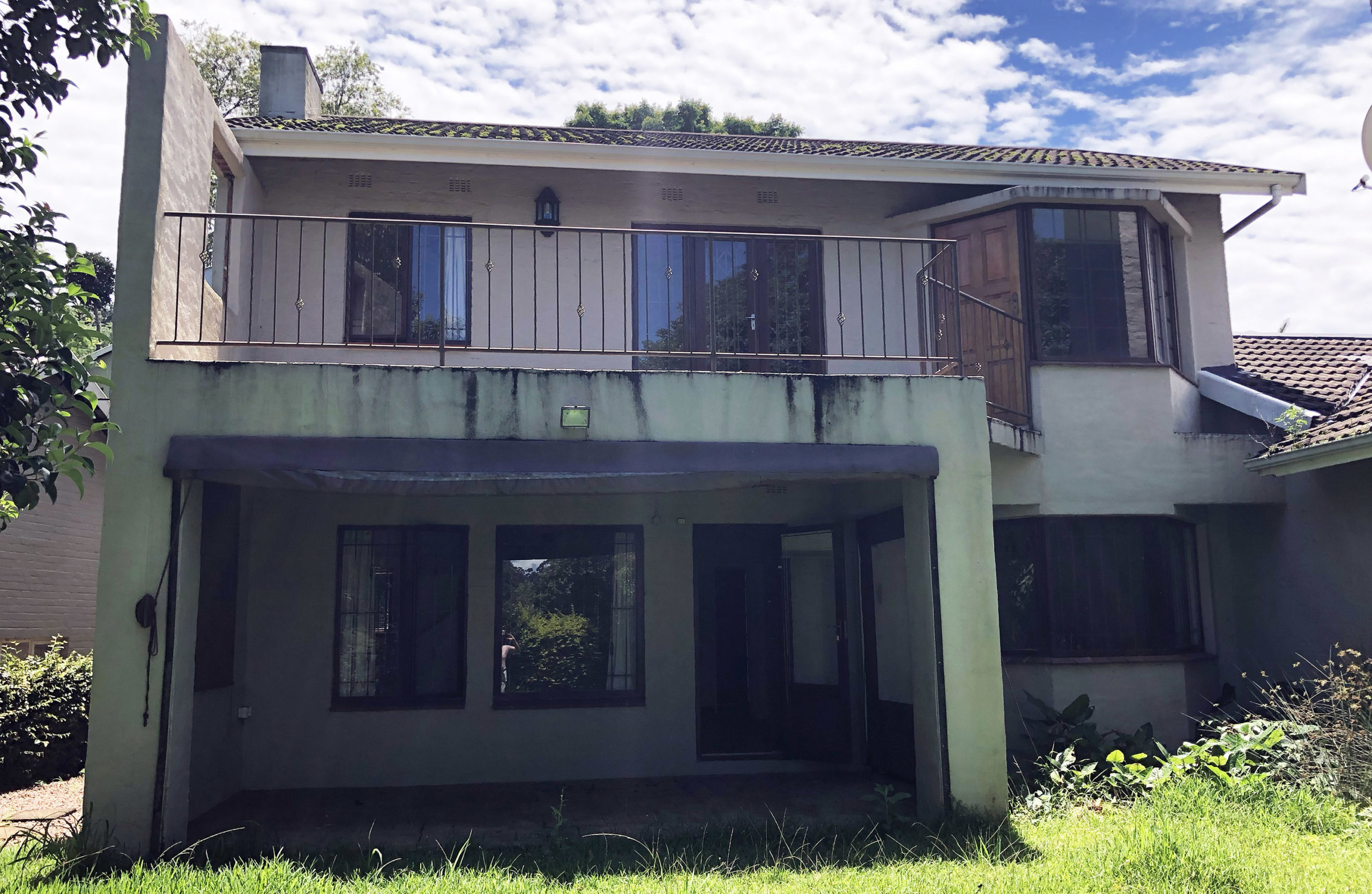
Our duplex on the day we bought it. (Photo: Colleen Dardagan)
In 2020, my husband, Greg, and I downsized. The final decision was taken after three years of debate: where was the ideal place to live, we had to cut our coats according to our cloth and most important for me, how could we keep our carbon footprint low?
We bought a home in a state of decay and have set about bringing it back to life. A shiny, new off-plan developer’s wet dream was not for us.
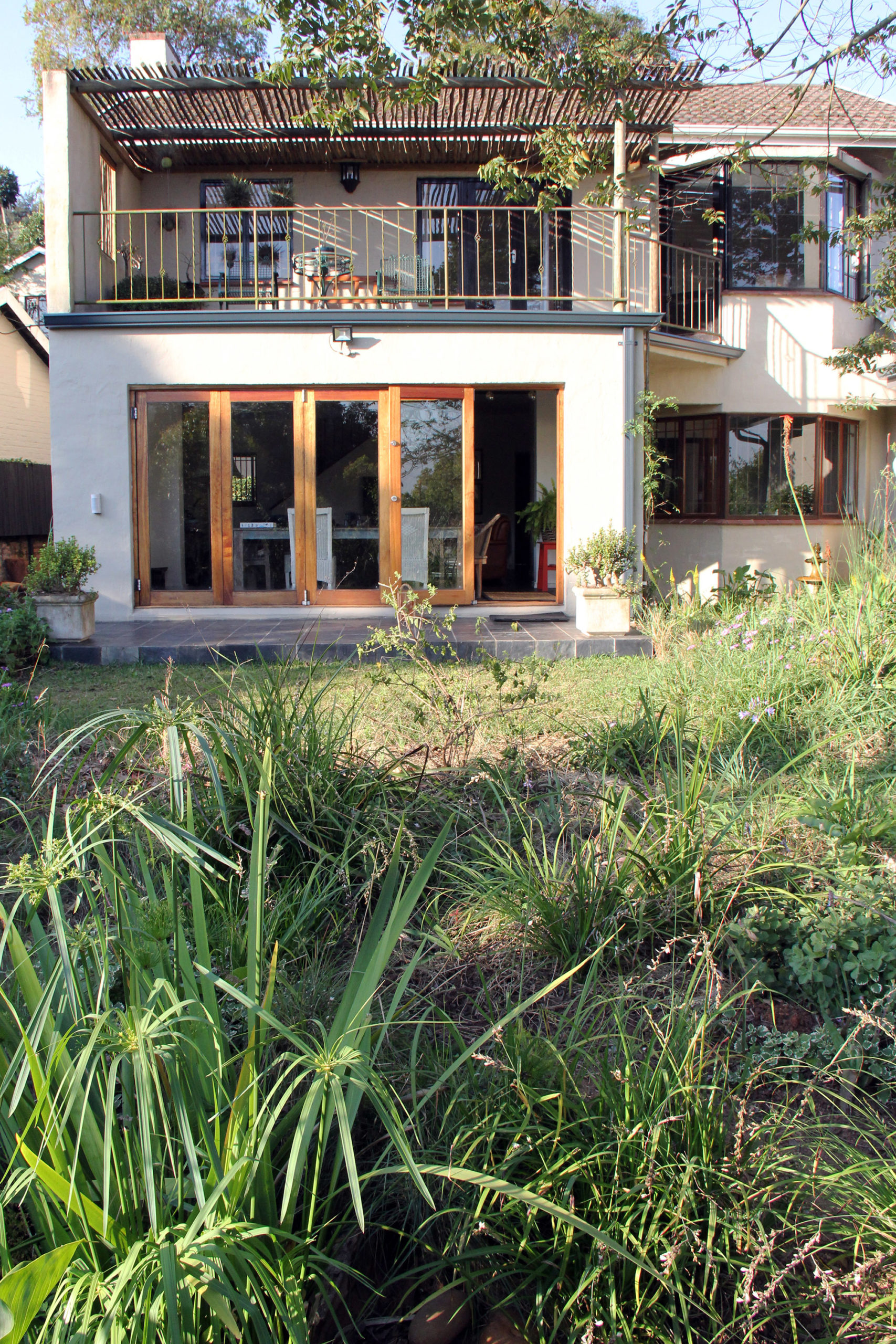
Work on our home is ongoing, but we have made progress. (Photo: Colleen Dardagan)
We were very clear when we appointed our builders that everything should either be handmade, second-hand, or “real”. In other words, reused black slate for the floors and kitchen cupboards made from Baltic shipping crates.
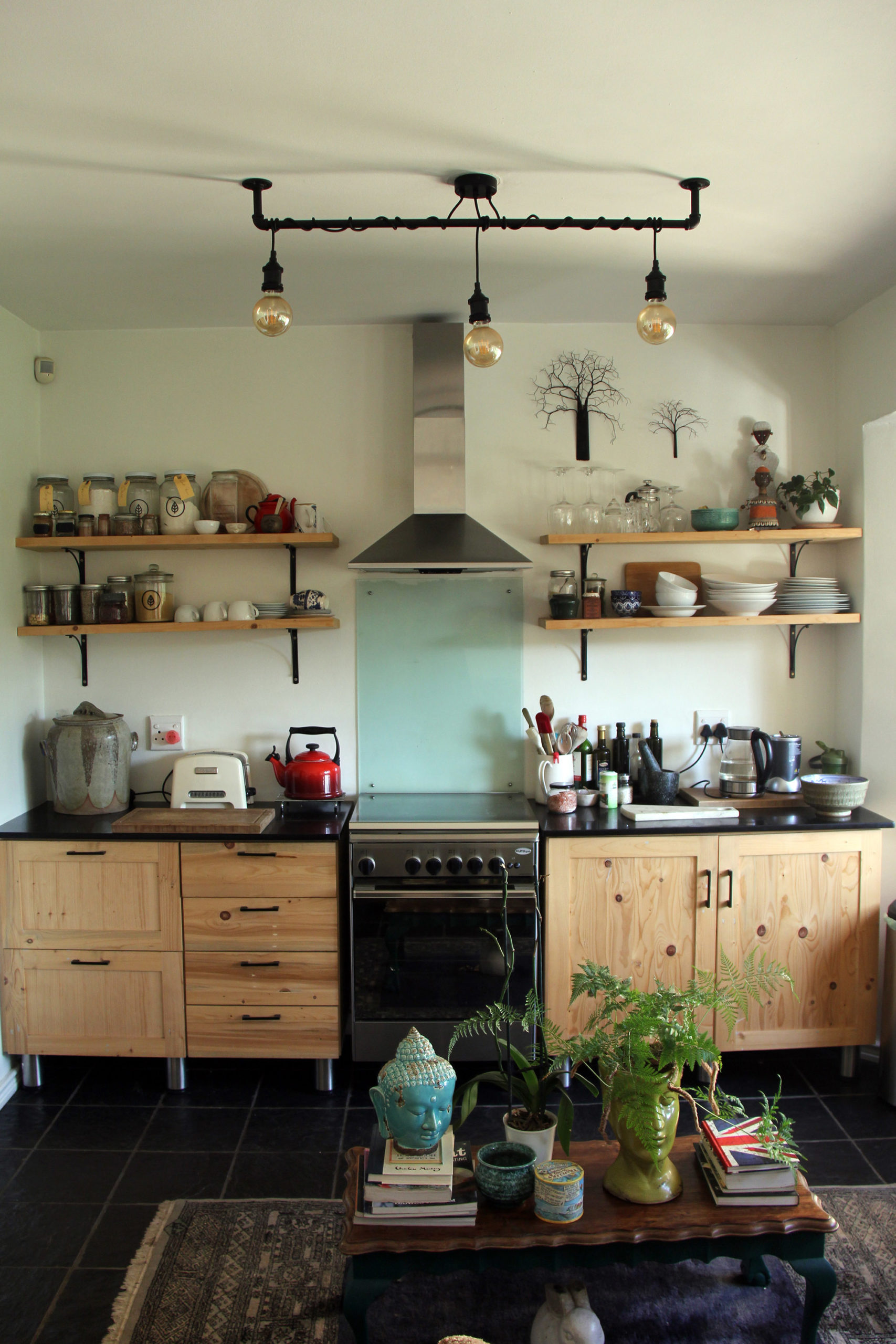
The kitchen cupboards made of recycled Baltic pine. (Photo: Colleen Dardagan)
On the day President Cyril Ramaphosa announced the Covid-19 hard lockdown last year I started stripping the moribund garden, which was filled with exotics and top category invasive plants.
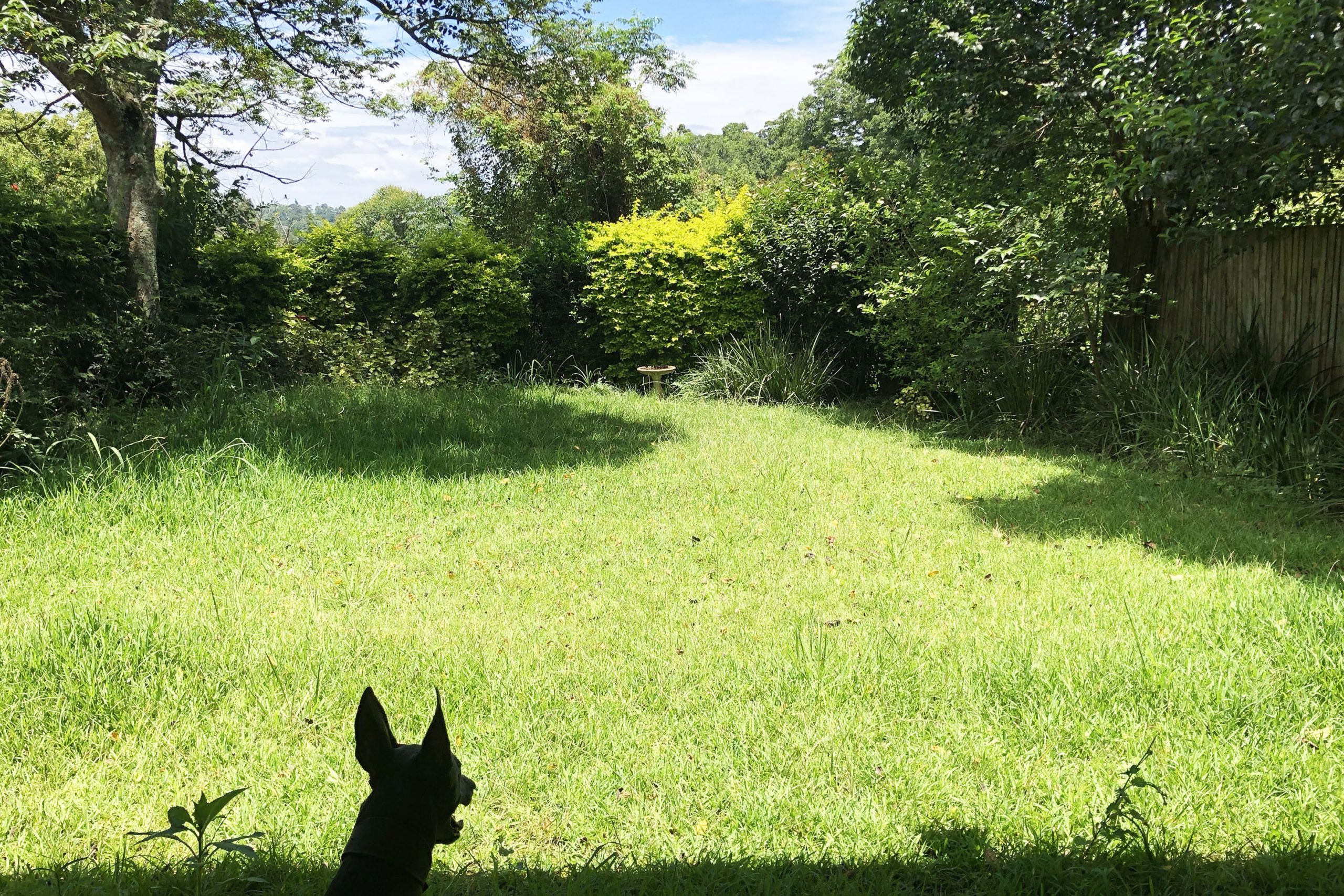
The moribund and neglected garden on the day we bought the property. (Photo: Colleen Dardagan)
Every plant was chopped up, dug out by the roots, and dropped. Green horse manure was applied before being covered with sheets of newspaper and cardboard. These layers were topped by a thick blanket of hay.
To our delight, a year on and after loads of compost, applications of carbon pellets and bokashi — all my organic kitchen waste is fermented in bokashi bins — the heavy clay soil is starting to show signs of increased earthworm and bacteria activity and turning into a dark-red, rich, crumbly mix edged with black humus.
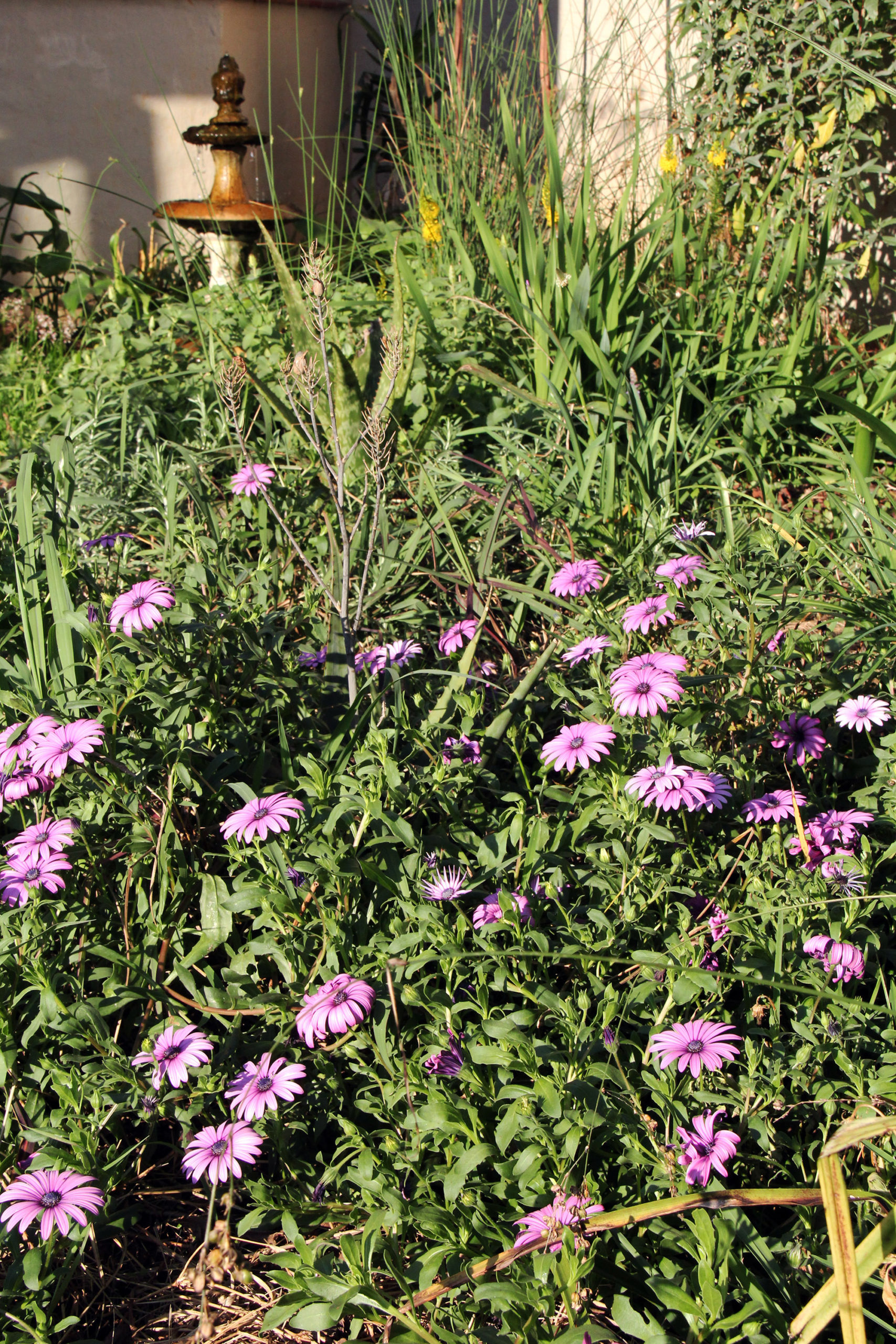
The garden now. (Photo: Colleen Dardagan)
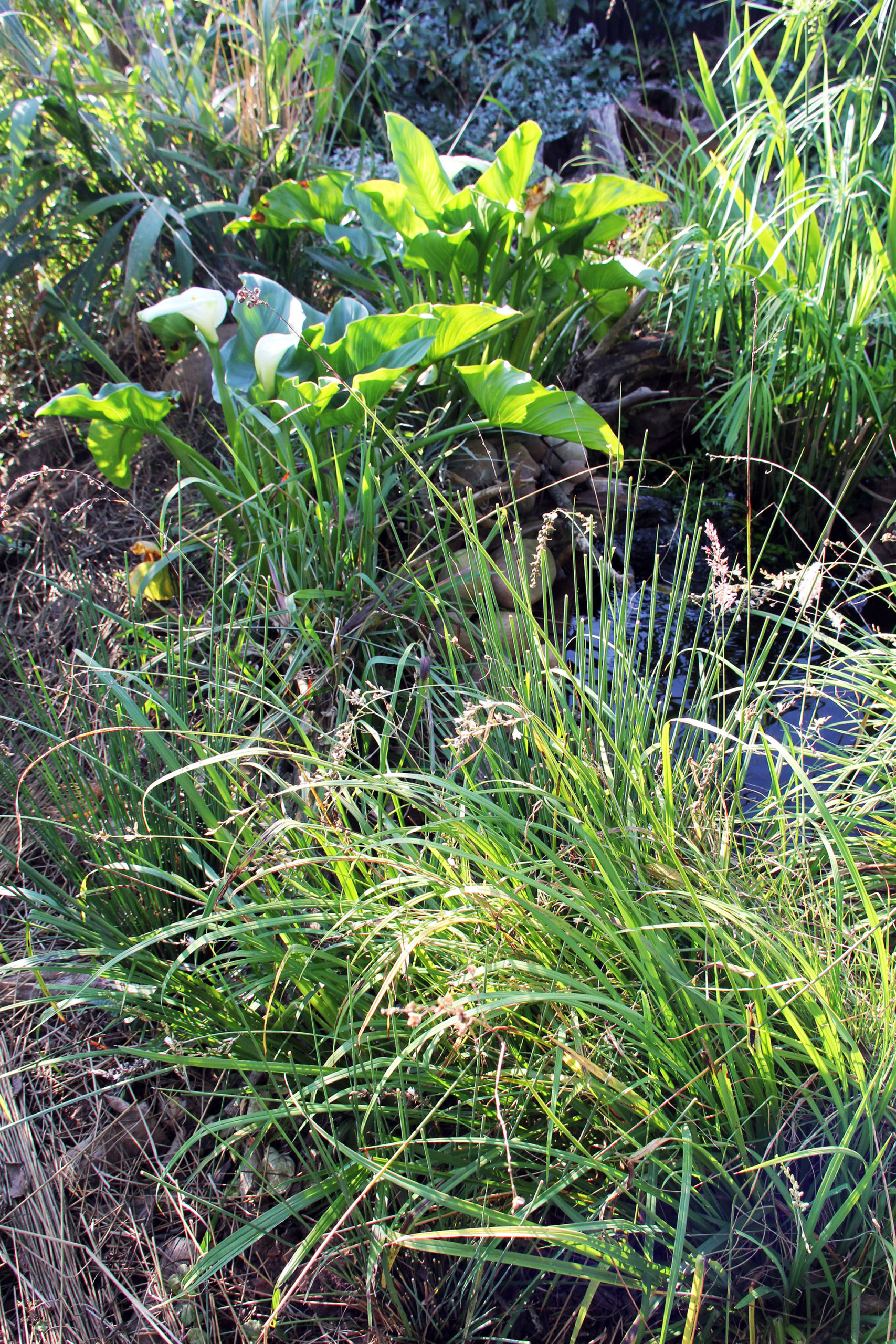
The garden now. (Photo: Colleen Dardagan)
The endemic and indigenous plants, which were all chosen based on whether bees, birds or insects could feed on them, are thriving. The two ponds I dug are filled with watercress, which I use to make soup and sprinkle on salads. And come September, the nightly frog song will fill the garden while during the day the increased number of grasshoppers, praying mantises, butterflies and birds are a testament to nature’s remarkable ability to recoup.
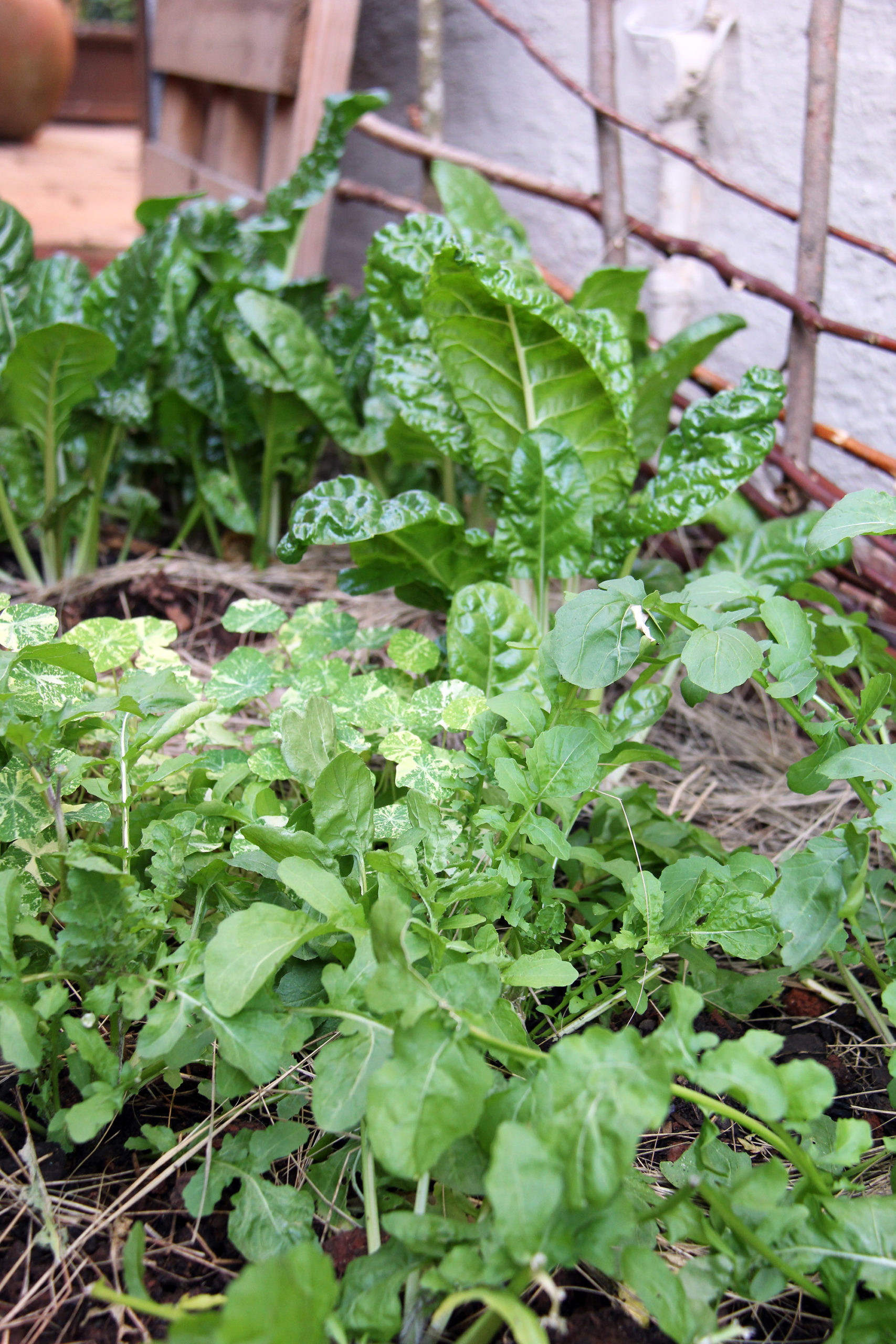
Greens grow in our vegetable garden although it is against a west-facing wall. (Photo: Colleen Dardagan)
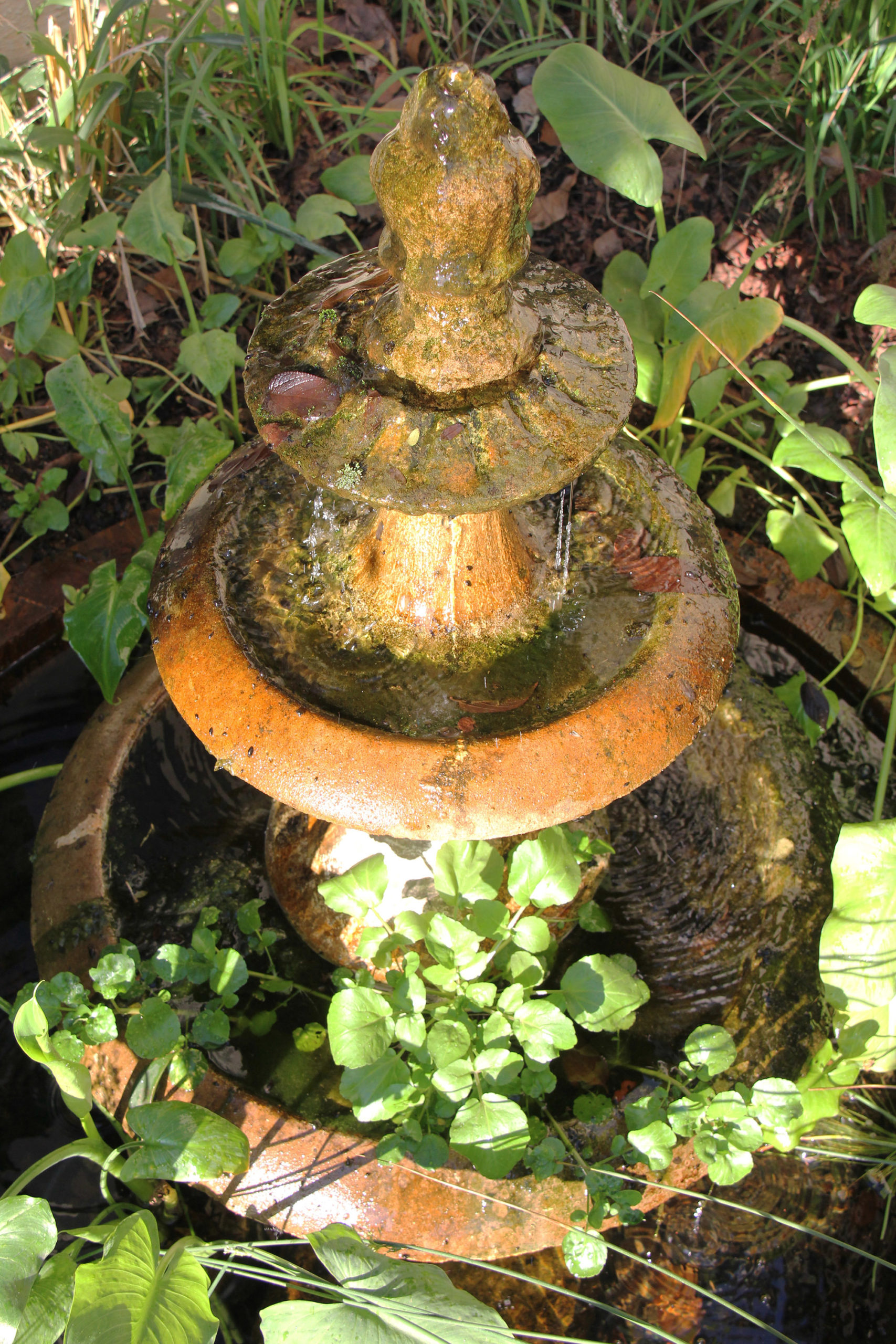
Watercress growing happily in the water fountain. (Photo: Colleen Dardagan)
My vegetable garden is tiny and totally in the wrong spot against a west-facing wall underneath the washing line. Regardless, it provides us with ample quantities of spinach, rocket, celery and herbs.
Vegetables are procured from a greengrocer and it’s when I am in the shop popping tomatoes and oranges into bags handmade from mutton cloth bought from the local hardware store that trouble can start. I have upbraided more than one customer for putting one lemon or piece of ginger into a plastic bag they have ripped off the roll provided by the store.
Once the vegetables are safely packed away into our car — we own just one car, not two — we head off to the Good Source, a zero-waste store where I take a wicker basket filled with glass bottles for refilling. Here I buy most of what we need, including dishwashing liquid, laundry soaps and softeners, home cleaners as well as nuts, teas, spices, grains, flours and olive oil.
My body and facial products are made by a young chemist who has started her own business from home, and I only buy second-hand or handmade clothing. Underwear is made from bamboo fabric, which I wear until it wears out.
As an aside, I haven’t been to a shopping mall for more than two years.
So, what is my advice to anyone wanting to start out on this journey?
- Don’t believe recycling is a solution; it isn’t. Reduce all plastics and choose zero packaging or packaging that will biodegrade.
- Read, watch, learn and believe in the power of one.
- Start with just one action — eliminating all plastic is a good one — followed by small incremental changes.
- Don’t throw out the plastic you already have, use it and when the time comes to replace it, gather second-hand glass containers. Charity shops are a good place to find them.
- Buy second-hand or handmade clothing or better still, start sewing or knitting your own. A good challenge is to refrain from buying new clothes for a year.
- If you have children or grandchildren, source second-hand toys and clothing.
- Support small businesses which are committed to ethical food or product production.
- Read the labels on all the foodstuffs you buy.
- Investigate where the food you eat comes from, particularly animal products.
- Investigate where the clothes you buy are made, by whom and out of what. DM/OBP
Have you made a change in your life that will have a positive impact on the environment and could possibly inspire others? Let me know about it on [email protected] using Our Burning Planet Solutions in the subject line.







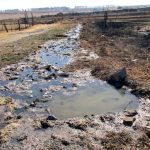











 Become an Insider
Become an Insider
An interesting piece but tough for many people to implement. I have recently started to plant a few things in pots (unfortunately our yard has artificial “grass”) and am making various other changes, but it’s things like the amount of plastic that comes with everything that I can’t figure out. If I buy certain fruits, they come in plastic, if I buy soda water for my home made juice, plastic. The condiments that come with our fast food. Plastic.
I’m sure I’ll eventually figure something out but for now it’s impossible to cut it out. Only reduce.
Im impressed reading about the efforts made by the author to reduce her footprint. However it takes commitment & some means to get on this path. I personally feel that every little bit helps. I do what I can in my environment.